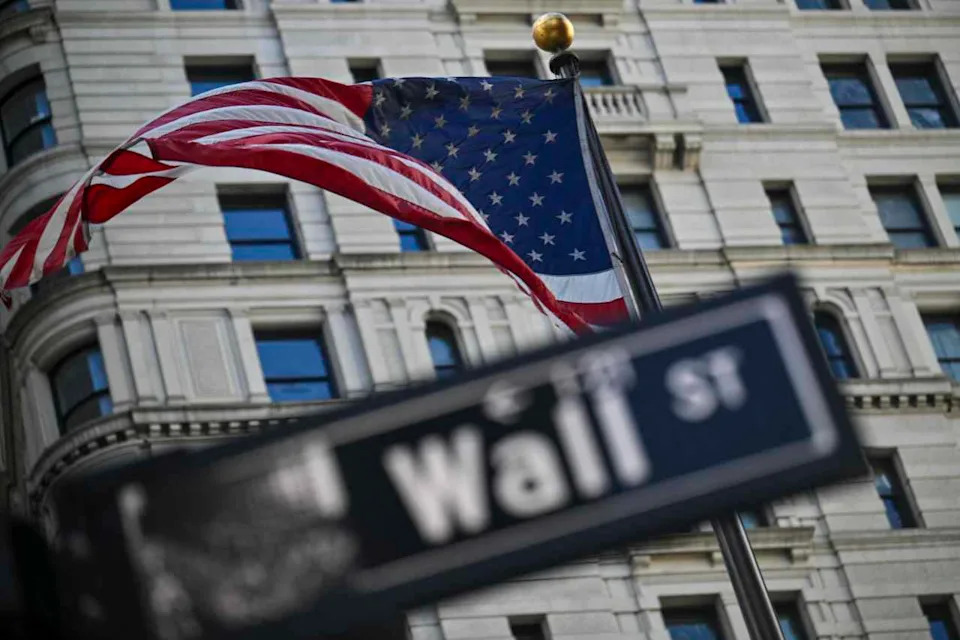Stock market’s rapid rebound from tariff-inspired rout stuns Wall Street. But there were signs this would happen.

Barely one month has passed since President Donald Trump blindsided global investors with his aggressive tariff plans. Yet U.S. stocks have already staged a remarkable recovery.
On Thursday, the S&P 500 capped off its strongest eight-day winning streak since November 2020, Dow Jones Market Data showed.
Many amateur traders who leaned into the volatility and bought the dip likely have plenty to celebrate. Unfortunately, many of their professional peers on Wall Street appear to have missed out.
Data shared by prime-brokerage desks across Wall Street GS have shown that institutional investors were far less eager to jump back into the market in April as stocks spiraled lower. Individual investors, on the other hand, didn’t just buy — they piled into risky products like leveraged ETFs to amplify their gains.
This discrepancy prompted Nomura markets guru Charlie McElligott to remark in commentary shared with MarketWatch on Thursday that the rebound has been “the scenario that nobody wanted” after a strong batch of earnings from Meta Platforms Inc. META and Microsoft Corp. MSFT helped deliver more gains for the Nasdaq Composite COMP.
See: This is the stock-market rebound that nobody wanted (except, maybe, retail): Nomura
According to McElligott, many Wall Street professionals, particularly systematic funds with prominent risk-management strictures, had been caught flat-footed by the market’s sudden turnaround. Now, they are scrambling to catch up, despite a lack of confidence in the macro backdrop.
At the same time, those who had the temerity to buy during one of the most chaotic months in recent memory have been generously rewarded: According to FactSet data, the S&P 500 SPX has risen by nearly 12% since its close on April 8, the day before Trump announced a pause on some of the tariffs that inspired one of the index’s best single-day gains in history.
Others who missed out are probably feeling the sting. Looking back, several reliable indicators suggested that the stock market was probably poised for a rebound. Although the fact that Trump dropped his threats to fire Federal Reserve Chair Jerome Powell, while backing away from some of his announced tariffs, certainly helped move things along.
“We were just grossly oversold,” said Michael Lebowitz, portfolio manager at RIA Advisors, during an interview with MarketWatch on Thursday. “There are still a lot of people who like to buy the dip.”
Lebowitz said technical guideposts like the relative strength index, or RSI, and the moving average convergence/divergence, better known as the MACD, suggested that stocks were a buy after these indicators showed the S&P 500 had fallen into oversold territory.
They weren’t the only contrarian indicators flashing a buy signal. The American Association of Individual Investors’ weekly sentiment gauge has reflected extreme bearishness for weeks. In the past, periods where respondents had been this downbeat have corresponded with other notable market bottoms, like in March 2009.
The Cboe Volatility Index VIX, better known as the VIX, was another tell. During the worst of the selling, the index closed above 50 for the first time since 2020.
Treasury Secretary Scott Bessent said during an interview with Bloomberg News last month that the fear gauge had likely peaked. So far, that has turned out to be a prescient call.
Trump’s initial decision to pause some of his tariffs helped to inspire one of the biggest daily rebounds in the S&P 500 in history on April 9, data showed. But the rally over the past eight days has largely taken place in the absence of any meaningful progress on the tariff front, leading Lebowitz to believe that the rebound has largely been technical in nature.
The arrival last week of a Zweig Breadth Thrust, a technical indicator with a strong record for foreshadowing above-average market gains, was credited by some with helping to restore investors’ faith in the market.
See: This technical indicator predicts a higher stock market — but don’t get too excited
Another fact that may have emboldened dip buyers: According to Ryan Detrick, chief market strategist at Carson Group, history shows that swift market selloffs have often resulted in equally rapid reversals, as the table below shows.
To be sure, markets aren’t flashing the all-clear signal just yet. As Lebowitz pointed out, the S&P 500 has yet to reclaim its 200-day moving average. He expects stocks could ping pong between this critical trend line and the lows from April as Trump’s trade war is likely far from over, and the degree of the potential economic fallout remains to be seen.
U.S. stocks finished higher on Thursday, with the S&P 500 rising 0.6% to 5,604.14, Dow Jones data showed. The Dow Jones Industrial Average DJIA gained 83.60 points, or 0.2%, to 40,752.96. The Nasdaq, meanwhile, gained 264.40 points, or 1.5%, to 17,710.74.
